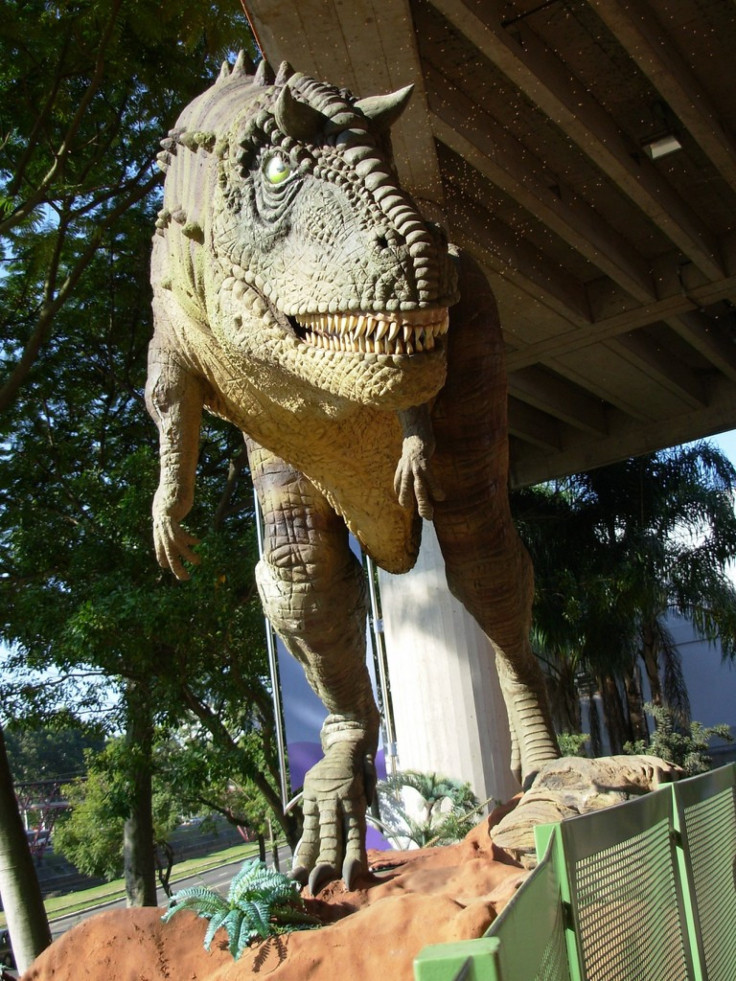Carnotaurus: Powerful Tail Made it a Speed Demon

The carnivorous Carnotaurus could have been the fastest prehistoric predator according to new research from the University of Alberta.
The Carnotaurus is a 23-foot long reptile that looks similar to a Tyrannosaurus Rex with two horns on its head. Paleontology graduate student Scott Persons recently completed a study of a molded copy of the animal's skeleton during a recent trip to a Los Angeles museum. Persons estimates Carnotaurus could have run more than 30 miles an hour.
The caudofemoralis muscle had a tendon attached to the dinosaur's upper leg bones, said Persons. The combination of the muscle size and tendon would have given Carnotaurus' sturdy legs a highly energized forward motion.
Persons' examination found along its long tail ran rib-like bones that could have supported a huge muscle. He used a 3-D computer model to recreate the tail muscle. The tail could have weighed around 500 pounds, about 15 percent of the dinosaur's total body weight. Its tail was proportionally the biggest for a dinosaur.
Person started his study by dissecting modern lizards and crocodiles and seeing how the tail related to leg movement. Scientists originally thought dinosaurs' tails were just a counter weight for the animals and had nothing to do with movement.
When this tail muscle contracts, what it does is pull the leg backwards and when a crocodile or lizard is walking or running, all of its locomotive power, all of its forward thrust, comes from the contraction of that muscle pulling the leg backwards, Persons said. The same thing, as it turns out, is true for dinosaurs.
The only downside is the huge tail muscle made it hard for the Carnotaurus to make quick turns.
Imagine yourself as a small plant-eating dinosaur on the floodplains of prehistoric Argentina, and you are unlucky enough to find yourself being charged by a hungry Carnotaurus, Persons said. Your best bet is to make a lot of quick turns, because you couldn't beat Carnotaurus in a straight sprint.
© Copyright IBTimes 2024. All rights reserved.



















